In 2025, businesses are redefining their HR strategies to enhance agility, resilience, and long-term performance across various industries. Strategic Human Resource Management (SHRM) connects HR practices with core business goals to drive measurable outcomes.
Firms with advanced SHRM are more productive and more likely to exceed revenue goals. These gains result from proactive planning, skills development, and the integration of HR technologies aligned with future workforce needs.
This blog explains how SHRM differs from traditional HR and why it matters for sustainable growth. We’ll explore key principles, real-world examples, and how to apply SHRM aligned with your business goals.
Let’s get started.
TL;DR
- SHRM aligns HR strategies with business goals, driving agility, innovation, and measurable performance across all organizational levels.
- Proactive planning and AI-backed tools enable future-ready workforce strategies and reduce talent gaps across industries.
- Continuous learning systems and real-time analytics improve employee productivity, engagement, and development in dynamic sectors.
- Integrated compliance and adaptable HR models ensure legal alignment and flexibility in fast-changing regulatory environments.
- TeamLease solutions personalize SHRM implementation through technology, advisory support, and industry-specific talent lifecycle planning.
What is Strategic Human Resource Management (SHRM)?
In 2025, 70% of CEOs cite workforce strategy as a top priority for growth and innovation. SHRM transforms HR from a support function to a strategic driver, aligning talent strategies with business performance. It enables faster adaptation, greater agility, and long-term workforce sustainability across sectors.
Let’s explore SHRM’s components and their applications in various industries.
| SHRM Component | TeamLease Application | Industry Use Case / Technique |
| Workforce Planning | Predicts demand using labour analytics and employment trends. | Manufacturing utilizes demand forecasting to plan the deployment of skilled workers during seasonal spikes. |
| Talent Development | Offers a modular LMS for scalable upskilling and reskilling. | Retail trains large frontline staff for POS tools using microlearning modules. |
| Performance Alignment | Aligns goals using KPI dashboards and real-time feedback loops. | BFSI uses real-time scorecards to track and reward cross-sell targets. |
| Compliance Integration | Digitizes labour law tracking and audit readiness. | Logistics utilizes automated compliance workflows to ensure adherence to contract staffing regulations. |
| Technology Adoption | Implements AI-powered hiring and digital onboarding workflows. | The IT sector automates screening to fill project roles faster with pre-vetted profiles. |
| Change Management | Supports large-scale transformation with engagement surveys and internal communications. | Healthcare manages system migration by training nursing staff via stepwise simulation programs. |
These real-world techniques show how SHRM creates a measurable impact across functions, teams, and industries.
Partnering with experienced HR providers like TeamLease ensures access to proven strategies, tech-enabled tools, and solutions tailored to your industry’s needs.
Let’s now explore why SHRM is more critical than ever in 2025.
Why is SHRM Important Today?
By 2025, companies are using SHRM to streamline multi-location hiring, enable skills-based training, and manage compliance in regulated sectors. Strategic HRM also supports workforce planning during mergers, digital transformation, and seasonal demand surges, ensuring agility and alignment with evolving business needs.
Let’s look at real-world applications of SHRM across industries and business functions:
- Manufacturing Optimization: TeamLease’s workforce scheduling tools minimize downtime, ensuring seamless shift coverage and enhancing assembly line efficiency.
- Healthcare Staffing: Real-time dashboards predict absenteeism, enabling proactive staffing decisions across hospitals and clinics.
- BFSI Compliance Management: SHRM frameworks with audit-ready documentation help manage risk and meet evolving regulatory requirements.
- Retail Scalability: Forecasting models automate seasonal hiring based on historical demand and footfall data.
- Tech Upskilling: LMS platforms support role-based learning paths, increasing project efficiency in IT delivery teams.
- Logistics & Warehousing: Smart rostering tools manage fleet and warehouse workforce during high-volume order periods.
- Remote Work Readiness: Virtual onboarding suites allow for seamless remote hiring and engagement across distributed teams.
- TeamLease Solutions: Uses AI-driven hiring, compliance tools, and learning systems to implement customized SHRM plans.
Strategic HRM transforms talent into a competitive advantage, enabling businesses to stay agile in uncertain economic and technology-driven environments.
Also Read: 5 Key Manpower Supply Strategies for Hiring Better Talent
Next, let’s explore the Difference Between Traditional HRM and Strategic HRM to see how goals and impact differ.
Difference Between Traditional HRM and Strategic HRM
Traditional HRM focuses on administrative tasks and short-term needs. Strategic HRM (SHRM) integrates workforce planning with long-term business goals. TeamLease uses SHRM tools that align talent acquisition, learning, and compliance with business outcomes across sectors.
Let’s explore key differences between the two approaches in a simplified format:
| Aspect | Traditional HRM | Strategic HRM |
| Focus Area | Processes hiring through basic forms and spreadsheets | Aligns hiring with business goals using predictive tools |
| Time Orientation | Responds to issues as they arise | Plans are proactively based on business forecasts and labor trends |
| HR Role | Limited to admin tasks and documentation | Acts as a strategic advisor to leadership |
| Technology Usage | Manual data entry and basic HRMS | Uses AI screening, digital onboarding, and LMS by TeamLease |
| Decision-Making | Based on intuition or past trends | Uses real-time analytics for informed talent decisions |
| Compliance Handling | Manual labor law tracking | TeamLease dashboards track compliance updates across locations |
| Talent Planning | Fills roles based on short-term vacancies | Map future workforce needs with succession and skill gap tools |
| Learning Approach | Same training for all departments | Uses adaptive learning paths via digital platforms powered by TeamLease LMS |
| Use Case (Industry) | Manufacturing plants managing seasonal hiring manually | IT and healthcare using digital HR workflows for scale |
| TeamLease Example | Basic contract staffing for compliance needs | Integrated talent lifecycle solutions using tech for staffing, skilling, and EOR |
These differences reflect how SHRM transforms HR from a support function into a business enabler.
Now, let’s break down the 8 Key Features of Strategic Human Resource Management and how they power workforce transformation.
8 Key Features of Strategic Human Resource Management
Strategic Human Resource Management (SHRM) redefines HR as a long-term value driver, not just a support function. It focuses on aligning HR practices with overall business goals, leading to better employee engagement, motivation, and ultimately, increased productivity and retention.
Below are the 8 key features that make SHRM a critical asset for modern businesses:
1. Alignment with Organizational Goals
Alignment with Organizational Goals ensures that every HR function contributes to business growth, agility, and innovation. For TeamLease, goal alignment drives tailored workforce strategies across industries using integrated tools and real-time analytics.
Here’s how alignment plays out across strategic HR operations:
- Goal-Based Talent Planning: TeamLease maps workforce demand in sectors like BFSI and retail through demand forecasting and sectoral trend analysis tools.
- Workforce Analytics for Strategic Fit: Predictive dashboards from TeamLease assess workforce performance, attrition risk, and future skill needs across manufacturing and logistics sectors.
- Cross-Functional Collaboration Models: Integrated planning frameworks align HR with operations and sales functions, improving response times in dynamic consumer markets.
- Performance Metrics Integration: Digital appraisal systems link individual KPIs to broader business objectives in high-compliance sectors, such as pharmaceuticals and healthcare.
- Change-Aligned Training Programs: Customized LMS modules support skilling for tech transformation in IT services and digital-first enterprise operations.
- Customized Engagement Roadmaps: Employee journey mapping improves retention in high-turnover industries using TeamLease’s AI-powered sentiment and pulse survey tools.
- Strategic Role Mapping: Skill matrix models identify succession gaps in leadership roles within fast-growing startups and mid-market enterprises.
- Real-Time Compliance Tracking: TeamLease tech ensures regulatory alignment and labor law compliance for distributed teams in gig and staffing environments.
This alignment not only boosts clarity but also builds accountability across departments.
TeamLease enables organizations to identify skill gaps early on using structured assessments, driving proactive and data-driven workforce planning.
To stay competitive in a rapidly evolving business environment, organizations must anticipate workforce needs and respond proactively to emerging challenges.
2. Proactive and Forward-Looking Approach
Modern organizations must move beyond reactive HR practices to anticipate future talent needs and industry disruptions. Proactive workforce planning helps organizations anticipate and adapt to various challenges, such as economic downturns, technological disruptions, or unexpected talent shortages.
Let’s explore key use cases, techniques, and tech-backed examples that support a forward-looking HR strategy:
- Predictive Hiring Models: TeamLease applies AI-based forecasting to anticipate hiring needs in the telecom and infrastructure sectors.
- Attrition Risk Analytics: Workforce analytics help predict turnover risk in customer service roles across the retail and e-commerce industries.
- Demand-Based Workforce Planning: Dynamic planning models adjust staffing levels in manufacturing units based on seasonal or demand shifts.
- Skill Gap Detection Tools: Internal assessments and LMS data highlight upcoming skill shortages in finance and healthcare teams.
- Scenario-Based Budgeting: HR teams simulate economic shifts to plan future staffing budgets in the energy and logistics sectors.
- AI-Driven Talent Matching: TeamLease’s tech maps employee skills to future roles, reducing transition time across large-scale IT projects.
- Proactive Compliance Mapping: HR tools flag upcoming labor regulation changes, helping avoid penalties in the pharma and education industries.
- Agile Learning Pathways: Customized LMS platforms deliver reskilling journeys for evolving digital roles in BFSI and fintech segments.
Strategic HR must continuously scan the horizon to enable long-term, people-first planning. Let’s now explore the following essential feature, such as focus on long-term workforce planning.
3. Focus on Long-Term Workforce Planning
Workforce planning today is no longer reactive—it’s a strategic necessity. Businesses must prepare talent pipelines that align with their future goals. Workforce demographics are changing, with an aging workforce and evolving expectations from younger generations. Long-term planning helps organizations adapt to these shifts and remain competitive.
Let’s explore key techniques and applications that support sustainable workforce planning.
| Strategy / Tool | Use Case | Industry Relevance |
| Succession Mapping | Identifies future leaders early to reduce transition disruptions. | BFSI, Healthcare |
| Workforce Analytics | Uses data to forecast headcount needs three to five years in advance. | Retail, Telecom |
| Internal Mobility Frameworks | Promotes upskilling and lateral role shifts to retain talent. | IT, Manufacturing |
| Demand Forecasting Algorithms | Predicts future hiring needs based on product or market cycles. | Logistics, Consumer Goods |
| TeamLease SkillCloud | Tracks emerging skills and aligns training with long-term gaps. | EdTech, Pharma |
| Role Redesign Initiatives | Reframes outdated roles to match evolving business models. | Energy, Hospitality |
| Flexible Talent Pools | Maintains a ready bench of gig and full-time professionals. | E-commerce, Automotive |
| Strategic Talent Benchmarks | Compares internal capabilities against industry future-state models. | Real Estate, Fintech |
As HR evolves from a service function to a strategic one, long-term workforce planning becomes a core growth enabler.
TeamLease integrates operational HR tasks with strategic objectives, utilizing unified platforms to enhance efficiency and impact.
Next, let’s see how strategic HRM integrates directly with corporate strategy.
4. Integration with Corporate Strategy
Strategic Human Resource Management (SHRM) ensures that HR isn’t siloed—it’s aligned with the business vision and growth roadmap. When HR strategies align with business goals, organizations respond more quickly to change and innovate more effectively.
Here’s how this integration plays out across real industries and use cases.
- Strategic Workforce Planning: HR teams use market trend data to forecast talent needs for new product verticals in retail and FMCG.
- Digital Transformation Support: HR plays a core role in tech adoption by reskilling employees in logistics and manufacturing units.
- KPI-Linked HR Metrics: HR performance metrics are closely tied to business KPIs, such as revenue per employee, in the BFSI and tech services sectors.
- TeamLease Strategic Advisory: Offers customized frameworks to align hiring, retention, and compliance with business expansion plans.
- Cross-Functional Collaboration Models: HR collaborates with R&D and operations to enable faster go-to-market in healthcare and automotive.
- Scenario Planning Tools: Tools forecast the HR impacts of business shifts, such as mergers, helping to plan for talent integration in the telecom industry.
- Performance-Driven Culture Models: HR implements OKR-driven models to drive agility in startups and high-growth mid-sized companies.
- Leadership Pipeline Planning: HR identifies and develops future leaders in sync with strategic succession goals in finance and education.
Aligning HR with business strategy isn’t optional—it’s foundational to sustainable growth and transformation.
Also Read: What are the benefits of HR outsourcing services?
Next, we’ll explore how strategic HRM nurtures organizational culture and values at every level of the workforce.
5. Emphasis on Organizational Culture and Values
Organizational culture is no longer just a “nice-to-have”—it’s a critical driver of engagement, retention, and business outcomes. For example, manufacturing firms with values-aligned workforces report fewer labor disputes and higher safety compliance. In IT services, culture-driven initiatives enhance cross-team collaboration and accelerate project delivery.
Below are examples illustrating how HR strategies promote a strong culture and values across various industries.
- Value-Aligned Hiring: HR teams utilize behavioral assessments to hire staff who are ethically aligned in the BFSI and healthcare sectors.
- Sentiment Analysis Tools: TeamLease platforms capture real-time employee feedback to assess the health of the culture and workplace sentiment.
- DEI Implementation: Manufacturing units incorporate diversity training into onboarding to promote inclusion from the outset.
- Culture Pulse Surveys: Monthly digital surveys track shifts in employee mindset across IT and logistics firms.
- Recognition Platforms: AI-based tools reward value-driven actions in retail, improving motivation and teamwork.
- Leadership Coaching Programs: Telecom firms train mid-managers on empathy and ethical leadership using LMS modules.
- Gamified Engagement: Ed-tech and BPOs use gamification to reinforce teamwork and adherence to cultural values.
- Culture Playbooks: TeamLease designs custom playbooks that align HR policies with business ethics, enabling organizations to scale effectively.
A value-driven culture doesn’t happen by chance—it must be cultivated with intent and reinforced by systems and leadership. Let’s explore how SHRM enables Continuous Talent Development to future-proof workforce capabilities.
6. Continuous Talent Development
Most of the employees today feel they aren’t reaching their full potential due to a lack of development opportunities. In 2025, continuous upskilling is no longer optional—it’s a strategic necessity for retaining and growing top talent. Businesses that prioritize ongoing learning see higher profit margins through improved performance and adaptability.
Let’s explore how industries are integrating continuous development into daily workflows using tools, tech, and practical approaches:
- AI-Based Learning Paths: TeamLease LMS recommends custom upskilling tracks in IT and BFSI, tailored to role-level skill gaps.
- Performance-Linked Training: Manufacturing companies tie technical certifications to promotions, boosting production efficiency.
- Mobile-First Learning Apps: Field service teams in telecoms complete training modules during low-activity work hours.
- Real-Time Coaching Bots: Retail sales teams utilize chat-based AI bots to practice negotiation and objection handling.
- VR for Skills Training: Healthcare firms apply VR for surgical simulation and emergency response preparedness.
- Gamified Learning Platforms: Logistics firms use point-based gamification to enhance warehouse safety training.
- Workforce Heatmaps: Talent advisory teams at TeamLease utilize skill heatmaps to prioritize learning budgets in rapidly scaling sectors.
- Digital Skill Incubators: Finance and insurance teams host internal bootcamps to prepare employees for new compliance technologies.
- On-Demand Learning Portals: Remote support roles access curated content on regulations, customer handling, and system updates 24/7.
- Soft Skills Simulations: Tech firms simulate real-world scenarios to help developers and engineers improve collaboration skills.
To ensure development strategies are measurable and outcomes-focused, organizations are increasingly turning to data-driven decision-making as the next pillar.
7. Data-Driven Decision Making
Modern HR decisions are no longer based on guesswork—they rely on real-time insights and predictive analytics. Organizations using HR analytics are twice as likely to improve recruitment and three times more likely to retain talent.
Here’s how companies are applying data-driven HR practices using innovative tools, industry use cases, and analytics-based strategies:
- Attrition Prediction Models: TeamLease applies churn analytics in BPOs to flag at-risk employees based on engagement and attendance.
- Skill Gap Analytics: Manufacturing firms utilize dashboards to compare current skills with future project needs for effective workforce planning.
- Automated Hiring Insights: Recruitment AI engines identify top applicant traits across high-turnover roles in logistics and delivery.
- Learning ROI Measurement: BFSI firms track course completion vs. performance improvement to optimize training investments.
- Performance Heatmaps: Managers visualize department-level KPIs and coach underperformers using real-time performance dashboards.
- Workforce Costing Tools: HR planners simulate labor costs across business units to align hiring with budgets and productivity.
- Compliance Tracking Dashboards: Health and safety metrics in infrastructure projects are monitored daily for real-time action.
- Sentiment Analysis Tools: Feedback from surveys and reviews is analyzed in retail to improve employee experience strategies.
- Recruitment Funnel Metrics: Hiring teams track time-to-fill, source efficiency, and dropout rates to refine talent pipelines.
- Diversity & Inclusion Analytics: Education and IT firms track gender ratios, pay equity, and growth data to support inclusive hiring.
With data shaping every strategic move in HR, the next step is to build adaptable systems that respond to ongoing change.
Customized training programs offered by TeamLease promote continuous skill development tailored to business goals and industry needs.
Let’s explore how flexibility and adaptability are embedded into the DNA of strategic HR functions today.
8. Flexibility and Adaptability
In 2025, HR must be flexible, adapting strategies and processes to shifting market dynamics. Organizations with adaptable workflows see a faster response to market changes. TeamLease develops agile HR frameworks that adapt to technological shifts, evolving business priorities, and workforce diversity.
Let’s explore how flexibility shows up in HR through tools, techniques, and real-life use cases:
- Cloud-Based HR Platforms: TeamLease’s cloud HRMS scales instantly for seasonal demands in retail and logistics.
- Modular Staffing Models: Dynamic use of gig, contract, and full-time staff supports varying business cycles.
- Adaptive Learning Systems: LMS reorganizes training modules in real time based on skill demands in IT upskilling.
- Pulse-Driven Feedback Loops: Retail outlets deploy quick surveys to rapidly pivot engagement and culture initiatives.
- Role Repurposing Frameworks: Manufacturing teams shift staff roles during automation transitions using multi-skill matrices.
- Scalable Onboarding Suites: Tech startups onboard remote teams simultaneously using digital document workflows.
- Cross-Training Programs: Healthcare workers rotate across functions when patient-care needs spike unexpectedly.
- Regulatory Response Tools: HR compliance modules update automatically to reflect new labor law changes at the state level.
Real-time compliance dashboards by TeamLease help businesses minimize legal risks and enhance workforce governance.
To move from theory to impact, organizations must understand how to implement Strategic HRM effectively across all levels.
How to Implement Strategic HRM Effectively
Strategic HRM transforms HR from a support role into a driver of business impact. Companies that align HR strategies with business goals are more likely to outperform peers financially. In 2025, effective SHRM implementation will be crucial to meeting the evolving demands of talent, technology, and regulations.
Here’s how organizations can embed Strategic HRM effectively in their operations:
- Align HR with Business Strategy: HR policies should be developed in sync with business KPIs and long-term organizational objectives to achieve measurable outcomes.
- Leverage Workforce Analytics: TeamLease platforms enable the analysis of attrition, hiring trends, and skills gaps to support proactive HR decision-making.
- Automate Core HR Tasks: Streamline payroll, onboarding, and compliance workflows to enhance accuracy, efficiency, and employee experience.
- Tailored to Industry-Specific Needs: Manufacturing utilizes predictive hiring, while BFSI employs regulatory-focused HR training to mitigate compliance risk.
- Upskill Continuously: Use digital learning systems for employee development aligned with tech transformation and evolving job roles.
- Centralized HR Services: Shared service models supported by TeamLease reduce operational inefficiencies and HR service fragmentation.
- Monitor Key Metrics: Regularly review data on retention, engagement, and workforce costs to ensure strategic alignment of HR efforts.
- Encourage Innovation: Promote cross-functional collaboration and agile practices through HR to foster a change-ready work environment.
Building an SHRM model is not a one-time effort. It demands continuous optimization of people, processes, and platforms to create business value.
Conclusion
Strategic human resource management in 2025 goes beyond traditional HR—it’s about aligning talent with business goals to drive transformation. When executed effectively, SHRM enhances workforce agility, boosts operational efficiency, and ensures organizations are future-ready in an evolving business landscape.
If your organization is looking to elevate its HR function into a strategic powerhouse, TeamLease is your trusted partner. From AI-enabled recruitment to integrated HR platforms and advisory support, we help you build scalable, people-first solutions that deliver measurable outcomes.
Partner with TeamLease today to unlock the full potential of your workforce and turn HR into a key driver of business success.
FAQs
1. What is Strategic Human Resource Management (SHRM)?
Strategic HRM is the process of aligning human resource practices with an organization’s long-term business objectives and strategies. It involves proactive talent planning, employee development, and data-driven decision-making to drive organizational success. SHRM goes beyond administrative tasks, focusing on measurable impact and future workforce readiness.
2. How does SHRM improve business performance?
SHRM ensures the right people are in the right roles with the right skills at the right time. It improves productivity, reduces turnover, and enhances employee engagement. Aligning workforce planning with strategic goals drives sustained business growth.
3. What technologies are used in Strategic HRM today?
Modern SHRM uses AI recruitment engines, predictive analytics, LMS platforms, and compliance dashboards. These tools streamline hiring, monitor performance, and identify training needs. They help HR teams act faster and make more informed decisions.
4. Why is workforce adaptability crucial in 2025?
In a fast-changing business environment, adaptability ensures that talent can evolve in line with market demands and technological advancements. Continuous learning, cross-functional skills, and tech fluency are essential. SHRM supports this through upskilling programs and agile workforce strategies.
5. How can organizations implement SHRM effectively?
Start by analyzing business goals and mapping HR strategies accordingly. Invest in tools that support talent analytics, training, and compliance. Partnering with experts like TeamLease helps tailor solutions that align people with performance.







